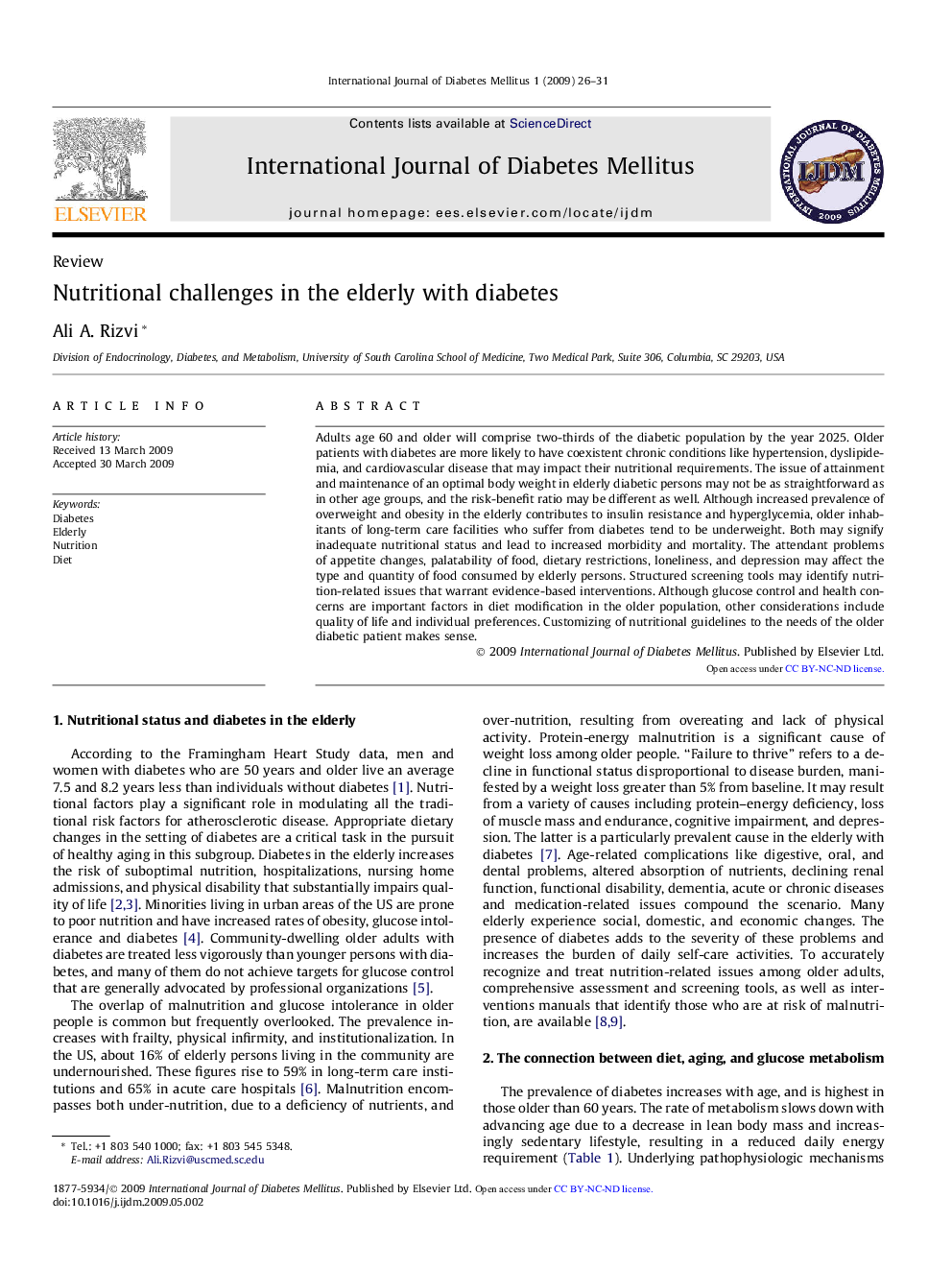| Article ID | Journal | Published Year | Pages | File Type |
|---|---|---|---|---|
| 3270461 | International Journal of Diabetes Mellitus | 2009 | 6 Pages |
Adults age 60 and older will comprise two-thirds of the diabetic population by the year 2025. Older patients with diabetes are more likely to have coexistent chronic conditions like hypertension, dyslipidemia, and cardiovascular disease that may impact their nutritional requirements. The issue of attainment and maintenance of an optimal body weight in elderly diabetic persons may not be as straightforward as in other age groups, and the risk-benefit ratio may be different as well. Although increased prevalence of overweight and obesity in the elderly contributes to insulin resistance and hyperglycemia, older inhabitants of long-term care facilities who suffer from diabetes tend to be underweight. Both may signify inadequate nutritional status and lead to increased morbidity and mortality. The attendant problems of appetite changes, palatability of food, dietary restrictions, loneliness, and depression may affect the type and quantity of food consumed by elderly persons. Structured screening tools may identify nutrition-related issues that warrant evidence-based interventions. Although glucose control and health concerns are important factors in diet modification in the older population, other considerations include quality of life and individual preferences. Customizing of nutritional guidelines to the needs of the older diabetic patient makes sense.
